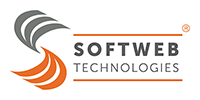The journey towards Sustainable Mining technologies is increasingly driven by the integration of IoT (Internet of Things). From reducing environmental impact to enhancing worker safety, IoT-powered systems are revolutionizing operations across the mining lifecycle. Key IoT applications that are reshaping the future of sustainable mining, along with their role in digital transformation for mining developers and operators (MDOs).
Why Sustainable Mining Technologies Are Crucial for MDOs
1. IoT-Driven Health and Safety Monitoring
Worker safety remains paramount in hazardous mining environments. IoT sensors are now deployed to detect environmental threats such as gas leaks, structural weaknesses, and insufficient ventilation. These real-time monitoring systems alert supervisors to potential hazards, including exposure to dust, diesel, and toxic gases.
Sustainable mining technologies like wireless sensor networks are helping mines deploy proactive ventilation systems that maintain optimal oxygen levels. IoT in this context directly enhances miner well-being and safety outcomes.
2. Environmental IoT Monitoring for Compliance and Remediation
Environment protection is the primary goal for sustainable mining technologies. IoT sensors enable continuous monitoring of acid-generating materials and pit water to reduce contamination risks.
Technologies such as
- remote sensors,
- predictive analytics, and
- automated wastewater treatment systems powered by IoT
ensure that waste materials are treated before discharge. These systems help MDOs meet environmental compliance while optimizing processes like evapotranspiration and fine particle containment.
3. IoT-Based Earth Crust and Strata Monitoring
Mine stability poses a consistent threat from underground stress and seismic activity. IoT devices like
- seismometers,
- vibration sensors, and
- strain gauges
assess stress, deformation, and ground displacement in real-time.
In open-pit and underground mining, IoT-enabled geo-sensors help monitor slope stability and structural integrity of mine walls, preventing landslides and equipment damage. These smart monitoring tools play a crucial role in ensuring both sustainability and safety.
4. Smart Transportation with IoT Integration
Transportation inefficiencies often lead to fuel wastage and emissions. IoT-powered systems optimize routes, monitor vehicle loads, and detect unauthorized access.
Solutions like the Mine Transport Surveillance System (MTSS) and Operator Independent Truck Dispatch System (OITDS) provide real-time insights into truck positioning, utilization, and movement patterns—eliminating human dependency and enhancing operational sustainability.
5. Advanced Gas Detection and Control
Mines often expose workers to toxic gases such as methane, carbon monoxide, and hydrogen sulfide. Sustainable mining technologies employ IoT gas sensors, including **
- IR-based detectors
- fiber optic chemical sensors (FOCS), and
- Fourier Transform Infrared Spectroscopy (FTIR),
to continuously monitor air quality.
Real-time alerts enable immediate evacuation or corrective action, significantly lowering risks and ensuring regulatory compliance.
6. Goaf Area and Subsidence Monitoring
In underground coal mines, goaf areas—collapsed sections of extracted regions—pose risks of gas build-up and subsidence. IoT systems monitor goaf stability using
- stress sensors
- gas detectors
minimizing the chances of explosions and surface collapses.
Real-time tracking of stowing operations (backfilling) ensures structural stability and environmental restoration, supporting long-term land reclamation goals.
7. Mine Fire Detection with IoT Sensing
Mine fires, especially in coal mines, can escalate rapidly. IoT-based fire monitoring systems use
- temperature sensors,
- gas concentration analyzers
- infrared detectors to detect early signs of combustion.
These systems integrate with centralized dashboards for real-time fire mapping and predictive risk analysis. Real-time and Automated alerts/alarms reduce response time, safeguarding assets and human life.
8. Smart Conveyor Belt Management
Conveyor belts are critical for efficient mineral transport but prone to failures. IoT technologies like
- fiber optic cables,
- acoustic sensors
- Rayleigh backscatter systems
detect issues like misalignment, broken bearings, and overheating.
These sustainable mining operations & technologies enable predictive maintenance, reduce energy consumption, and extend equipment lifespan—contributing to operational efficiency.
9. Water Quality and Groundwater Monitoring
IoT applications in water monitoring include
- resistivity-based geophysical sensors,
- membrane interface probes
- chromatography-based analyzers.
These tools measure parameters like pressure, pH, temperature, and metal concentrations in groundwater and surface water.
This proactive water management approach mitigates water-related hazards and supports eco-friendly mining operations.
10. Real-Time Miner Tracking and Safety Systems
IoT-based tracking systems, including
- wireless routers,
- RFID,
- 3D mapping,
localize workers in real-time. These tools are crucial during emergencies, allowing for quick rescue and fall detection.
This also enables remote workforce management, significantly improving safety and accountability in underground and remote sites.
The Future of Sustainable Mining Technologies: What’s Next?
Emerging Trends in Sustainable Mining IoT
As the industry evolves, several paradigm-shifting technologies complement these IoT applications:
– Autonomous Mining: Robotic drills and self-driving trucks reduce human exposure and optimize resource use.
– ERP for Mining: Integration of IoT data into ERP systems improves decision-making, resource tracking, and cost forecasting.
– Biomining: Use of genetically modified microorganisms for metal extraction reduces environmental impact.
– 3D Underground Mine Modeling: Advanced modeling and photogrammetry techniques enable better mine planning and risk assessment.
– Time-Domain Reflectometry (TDR): Detects ground movement in tailings and subsidence-prone areas using EM pulse reflection.
IoT is at the heart of the digital transformation of the mining industry. From tracking miners to managing water and gas emissions, these ten sustainable mining technologies enable safer, greener, and more profitable operations. MDOs, tech leaders, and policy-makers must embrace this digital shift to build resilient and eco-conscious mining ecosystems.


